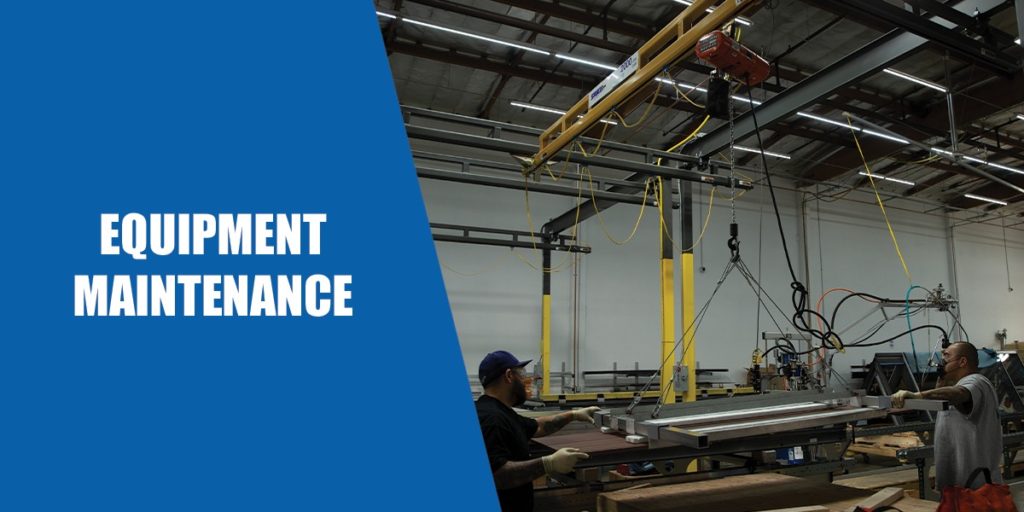
Equipment Maintenance
Jul 19, 2022
In material handling operations, preventive maintenance of overhead cranes and their parts and components is critical for keeping equipment and work environments as safe and productive as possible. A comprehensive preventive maintenance program typically includes three categories: inspections, routine maintenance, and repairs.
Preventive maintenance is important for multiple reasons. Material handling equipment is a significant investment, and maintenance protects that investment from excessive post-purchase costs. When maintenance is neglected, equipment can break down unexpectedly, causing unwanted downtime and lost productivity. In some cases, poorly maintained equipment can fail catastrophically, putting operators and nearby workers at risk of injury. Preventive maintenance also helps keep workplaces in compliance with OSHA and other regulations.
Inspections
Equipment inspection may be the most important part of a maintenance program, and it’s a well-covered topic in the material handling industry. CMAA 79, the Crane Operator’s Manual, is a definitive source for crane operations and safety. It lays out requirements for inspection procedures and requires operators to “perform daily inspections at the start of each shift, or at the time the crane is first used during each shift.”
Similarly, OSHA requires certain inspection procedures to be performed daily, monthly, and annually in the standard for overhead and gantry cranes, OSHA 1910.179(j). Many manufacturers also have their own daily and periodic inspection requirements. All Spanco systems must be inspected at least annually and before each use. Every system application and use will be different, meaning some conditions of use will require more frequent inspection.
Inspections are such a crucial part of a maintenance routine because they allow operators to determine when cranes need servicing or repairs. Thorough daily inspections will reveal any instances where parts begin to show excessive wear or visible signs of damage. Inspectors can identify any potential problems so they can be addressed before they become bigger issues.
Routine Maintenance and Repair
Routine maintenance, such as regular lubrication, changing fluids, replacing filters, etc., can help prolong equipment life. These tasks keep parts from becoming damaged or worn too quickly, which helps reduce crane downtime. Note that it’s also important to keep records of service history when maintenance is performed according to the manufacturer’s schedule.
Finally, it’s important that repairs are made when the need is detected. Making repairs immediately based on inspection criteria can eliminate headaches down the line. Smaller repairs will typically take less time meaning the crane will be out of service for a shorter period if a minor problem is addressed before it becomes a major problem. Additionally, many other problems can arise if equipment breaks down in the middle of operations rather than being removed from service during a pre-operational checklist.
A good preventive maintenance program and inspection schedule will not only keep your equipment running from one day to the next; it will also keep it working efficiently for many years to come, improve worker safety, and keep your equipment compliant with applicable safety standards and regulations.
Categories
Share this post
Contact us
Looking for the perfect fall protection equipment? Let us help!